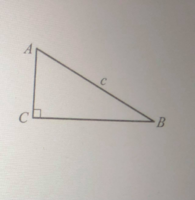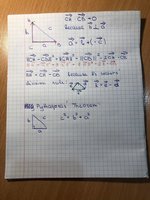Hello, I am stuck with this task: there is a triangle given and I have to prove the state:


I really don't have any clear solution as this topic is so hard for me.. As there is a vectors' multiplication, there are formulas like and
and  , but I don't have any numbers (values) given, maybe I should draw vectors on the coordinate plane?.. Could you explain what's the first step?
, but I don't have any numbers (values) given, maybe I should draw vectors on the coordinate plane?.. Could you explain what's the first step?
Thanks.


I really don't have any clear solution as this topic is so hard for me.. As there is a vectors' multiplication, there are formulas like
Thanks.

